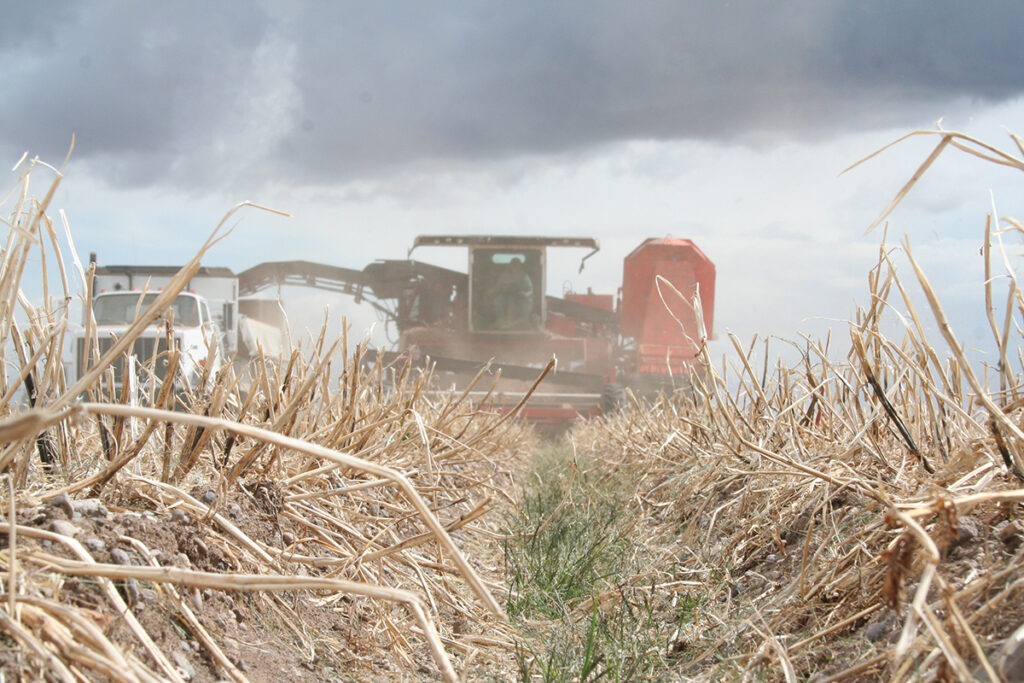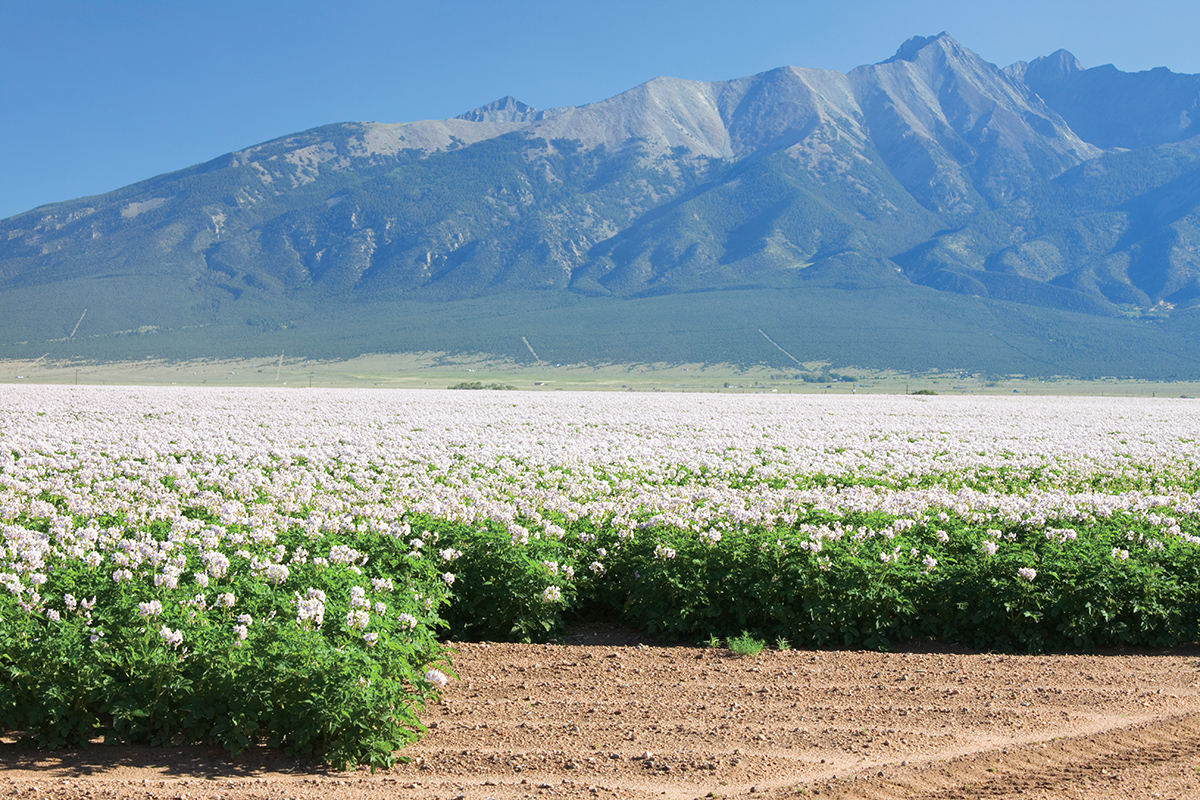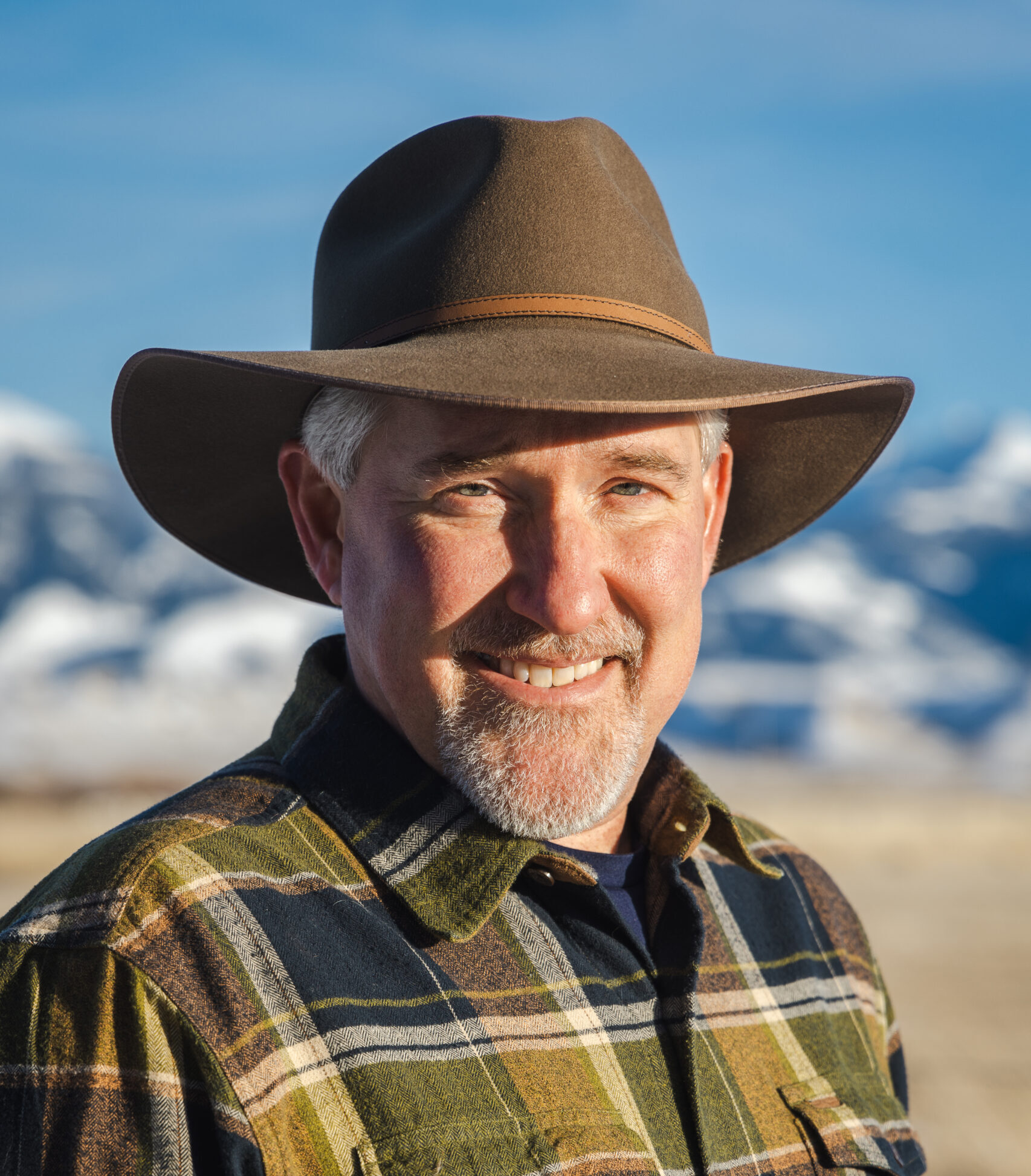This special issue of PERC Reports explores the West’s water crisis and how markets can address today’s shortages. Read the full issue.
The San Luis Valley of Colorado has been described as “a bowl of high desert” and “one of the largest alpine valleys in the world.” Flanked by the towering San Juan and Sangre de Cristo Mountain Ranges, you won’t find the crowded subdivisions of the state’s Front Range here. This is arid farm country, uniquely suited to growing potatoes, barley, and alfalfa. There’s a good chance that if you’ve ever savored a cold Coors beer, you can trace its birth to barley grown in the San Luis Valley. The area is blessed with interspersed wetlands too, making it a key Central and Pacific Flyway stopover for migratory ducks, water birds, shorebirds, and the iconic sandhill crane.
As with most of the West, the San Luis Valley also has a drinking problem: Its irrigators are consuming too much of what is already too little water available due to historic droughts.
The region receives less than eight inches of precipitation each year, and its surface water has been over-appropriated since the early 1900s. At that time, farmers and ranchers turned to extracting groundwater from the two aquifers underneath the valley. But by 1981, groundwater depletion had become such a concern that a moratorium was imposed on new well permits. Today, continued groundwater overdraft threatens not only injurious depletion of water for more senior rights holders but also wetland ecosystems.
Many places in the West are, like the San Luis Valley, at a tipping point. As PERC’s Shawn Regan notes, “In the American West, the response to drought has historically been to divert more water, build dams, or pump groundwater.” That is simply not an option in this treasured part of Colorado, where the state has already issued more well permits than the aquifers can support, and the forced shutdown of thousands of wells by regulatory action is imminent. The circumstances have called for more innovative solutions.

That is where Colorado Open Lands came in. The not-for-profit land trust and other partners conducted a groundwater feasibility study in 2018 to explore how traditional, voluntary land conservation tools could be applied to groundwater conservation in the San Luis Valley. One of the voluntary tools considered was a conservation easement.
Conservation easements are legal agreements with landowners to protect open space, wildlife habitat, and even streams and wetlands by forgoing development rights in exchange for cash payments and tax benefits. Beginning in 1980 with changes to federal tax laws, conservation easements became a frontier of conservation, accelerating the creation of land trusts, such as Colorado Open Lands, to facilitate these agreements.
Over the past 50 years, an estimated 40 million acres—an area the size of Wisconsin—have been conserved by conservation easements on private lands. Colorado Open Lands alone has conserved more than half a million acres in the state. But the organization found a way to dig deeper into innovative ways to use conservation easements to support the region’s two underground aquifers.
In exchange for compensation and tax benefits, the landowner has agreed to stop irrigating, conserving nearly 400 million gallons of water in the aquifers underneath the San Luis Valley. According to Colorado Open Lands, the “groundwater conservation easement” could be the first of its kind in the country.
In 2022, Colorado Open Lands entered into a conservation contract with a farmer in the San Luis Valley who historically used 1,800 acres of his land to grow peas and oats. Now called a “groundwater conservation easement,” the contract ends the farmer’s water rights to grow food, regardless of who owns the land in the future. In exchange for compensation and tax benefits, the landowner has agreed to stop irrigating, conserving nearly 400 million gallons of water in the aquifers underneath the San Luis Valley. According to Colorado Open Lands, the arrangement could be the first of its kind in the country.
While the groundwater conservation easement will help recharge the aquifer underneath it, notably, it will help save other farms in the valley too. Not because the farms would be entitled to use the surplus water—they won’t. But it will benefit neighboring agricultural operations because the additional 400 million gallons will restore the aquifer to a sustainable level that avoids a mandated state shutdown of wells—an outcome that would be catastrophic not only to farms in the valley but also to habitat for waterfowl and wildlife that’s supported by irrigated water.
Moreover, the innovative agreement to conserve groundwater is a permanent solution. The inflexibility inherent to such permanence has been a criticism of conservation easements by some. But the reality in the San Luis Valley is that the use of temporary solutions, such as voluntary seasonal cutbacks by ranchers and farmers or water leases, have not been enough to avoid state-imposed mandates to reduce water use.
While forgoing agriculture operations on a farm that has existed for 150 years may not always be an optimal outcome, it worked in this specific case. The farmer had no children, was looking to exit the business, and wanted to find a way to help the larger community. And not all farms using this innovation would have to stop farming. In practice, farmers could suspend a portion of their groundwater use through an easement, while retaining enough groundwater to convert to less water-intensive crops or agricultural activities.
Cleave Simpson, a neighboring rancher and farmer who also serves as the region’s state senator and manager of the Rio Grande Water Conservation District, says that groundwater conservation easements can be one tool that helps avoid economic disaster in the valley. For one thing, it can give landowners more options to make money off of their water rights. And for another, it is also a way of keeping water in the valley rather than selling it to support further development on the Front Range.
There is no simple solution to western water shortages, and tools that work in one place will often not be appropriate even in the next valley over. The groundwater crisis in the San Luis Valley is dire, yet it has primed the pump of innovation. It remains to be seen whether the groundwater conservation easement will become as widely deployed as its older sister, the land conservation easement. But the more options that we can add to the conservation toolkit, the better the West will fare in facing down its water woes.




